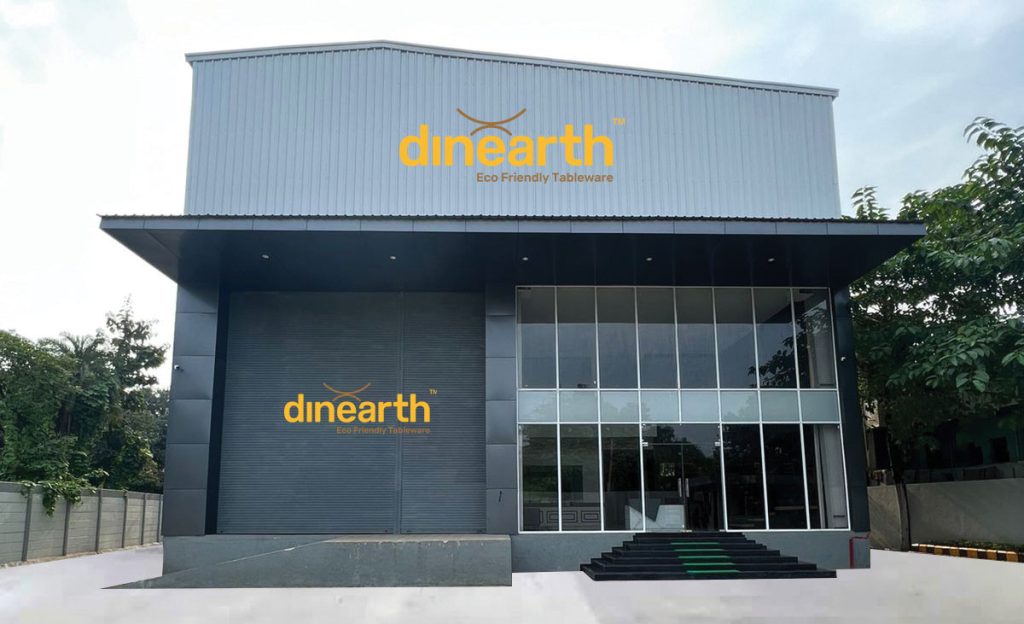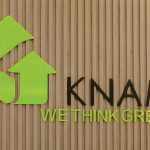Armed with global certifications such as BRC, OK Compost, and FDA, Dinearth is focussing on international markets, while continuing to improve its domestic standardization. During an exclusive interaction with Paper Mart, Mr. Harsh Mehta, Partner, Dinearth-Ashtavinayak Ind, shared that the company has technologically advanced in thermoforming precision and moisture control, thereby improving overall product consistency of compostable tableware.

Paper Mart: The plastic reduction movement has gained momentum through both regulatory action and consumer demand. From your perspective, which force has more directly impacted the momentum around reducing plastic waste? What specific event or market shift prompted your company’s strategic response?
Harsh Mehta: The regulatory push has had a more direct impact on reducing plastic waste, particularly in India with the 2022 single-use plastic ban. This policy shift led us to strengthen our focus on sustainable alternatives like bagasse. We aligned our strategy to meet new compliance demands and capitalize on the resulting demand surge.
PM: Your production relies specifically on bagasse. What quantifiable advantages led to selecting this particular material, and how do you balance environmental claims against practical constraints like supply chain reliability and product performance metrics?
HM: We primarily use bagasse due to its high heat resistance, sturdy form, and wide availability in India. Quantitatively, it offers a lower carbon footprint and decomposes within 90-120 days in industrial composting conditions. While balancing supply chain constraints, we’ve ensured consistent sourcing from sugar mills and optimized product strength & durability to match customer expectations.
Watch: In Pursuit of Lesser Water Footprint
PM: The terms “biodegradable” and “compostable” carry distinct certification requirements yet are used interchangeably in the marketplace. How does your company address this distinction when developing products, and what impact has this had on your certification strategy and manufacturing processes?
HM: We differentiate clearly between “biodegradable” and “compostable” in both product development and marketing. All our products are certified as compostable (EN13432, OK Compost), and we avoid using “biodegradable” without clarity. This clarity shapes our raw material selection, testing standards, and global certification efforts.
PM: Market adoption of biodegradable tableware appears driven by multiple stakeholders. Between corporate sustainability initiatives or B2B clients, consumer preferences, and regulatory frameworks, which segment has most meaningfully influenced the adoption in general and your sales growth in particular, and how has this mix evolved in the last few years?
HM: B2B clients, particularly export customers with corporate sustainability goals, have significantly driven adoption. Initially, regulatory changes influenced growth, but over time, conscious procurement practices and ESG commitments have taken the lead, especially in Europe, the Middle East, and the hospitality segment.
PM: The adoption of biodegradable tableware shows uneven development in terms of regions, industries, or buyer personas. Have you noticed any unexpected growth pockets that are embracing biodegradable tableware faster than others? Which specific markets or customer segments have driven growth for your company, and what factors are accelerating their transition from conventional plastics?
HM: We’ve observed faster adoption in regions like the Middle East and Tier 2 Indian cities with progressive municipal policies. Retail chains, cloud kitchens, and eco-conscious event planners have emerged as growth pockets. Awareness, local policy, and sustainability branding are key accelerators in these markets.

PM: Innovation in materials science continues to reshape production capabilities. What specific technological advancement, whether in raw material processing, manufacturing techniques, or product design, has most significantly enhanced your competitive position in this sector?
HM: A key technological advancement has been in thermoforming precision and moisture control, which has improved product consistency and allowed us to scale efficiently. These enhancements have increased both yield and product acceptance in high-standard markets.
PM: Product development faces a fundamental tension between replicating plastic’s performance characteristics and redefining consumer expectations. Is your R&D primarily focused on matching conventional plastic properties, or are you investing in shifting market expectations about what tableware should deliver?
HM: Our R&D is focused on replicating key functional traits of plastic like water and oil resistance, while gradually shifting customer expectations toward naturally textured, eco-friendly aesthetics. We believe the future lies in combining performance with clear environmental value.
PM: Even well-designed biodegradable products require appropriate waste management infrastructure. What specific infrastructure gaps most frequently undermine proper product disposal, and how is your company addressing these post-consumer challenges?
HM: The lack of industrial composting infrastructure and source segregation are the biggest disposal challenges. We are working with collection agencies and exploring partnerships with waste processing firms to build awareness and support post-use recovery where possible.
PM: Functional composting systems remain inconsistent across markets. Can you identify a specific municipality, institution or private operation that has successfully implemented end-to-end composting solutions, and what key operational elements make their system effective?
HM: Pune (India) and some EU municipalities like Milan have successfully implemented composting systems. Their success is rooted in mandatory waste segregation, strong public awareness and efficient local composting units that close the loop effectively.
PM: Policy support varies considerably across jurisdictions. What targeted regulatory change or incentive structure would most effectively accelerate your company’s growth trajectory, and what specific barriers have prevented its implementation?
HM: A targeted regulatory change that would significantly support our growth is the inclusion of certified compostable products under favorable tax slabs (like reduced GST), along with faster approval processes for eco-certifications. Additionally, clearer guidelines distinguishing compostables from conventional plastics would help avoid market confusion. The primary barrier remains inconsistent enforcement and lack of awareness among enforcement agencies and end-users.
Also Read: KNAM Marketing: Expanding Exponentially to New International Markets
PM: India’s manufacturing sector shows potential for global export leadership in biodegradable alternatives. Is your company positioning to compete internationally, or are domestic scale and quality standardization issues still the primary focus of your operational strategy?
HM: We are actively scaling our export business and hold certifications like BRC, OK Compost, and FDA to meet global standards. While we continue improving domestic standardization, our strategic growth is focused on international markets where demand is robust and evolving.
PM: The five-year outlook for biodegradable tableware remains subject to debate. Does your company view these products as eventual complete replacements for conventional plastics, or as one component in a more diverse portfolio of sustainability solutions?
HM: We see biodegradable tableware not as a total plastic replacement but as a critical part of a wider sustainable packaging ecosystem. We expect continued integration alongside reusables and recyclables, with compostables playing a pivotal role in foodservice and delivery sectors.

Initially, regulatory changes influenced growth, but over time, conscious procurement practices and ESG commitments have taken the lead, especially in Europe, the Middle East, and the hospitality segment.



